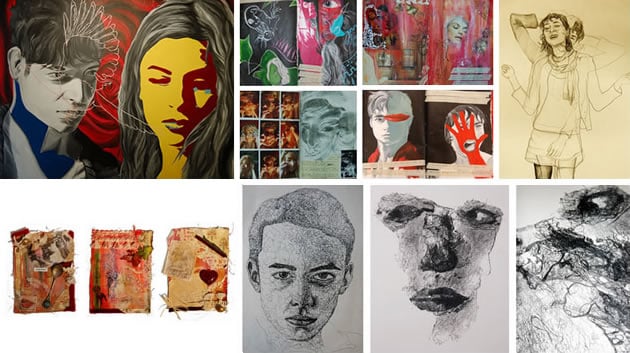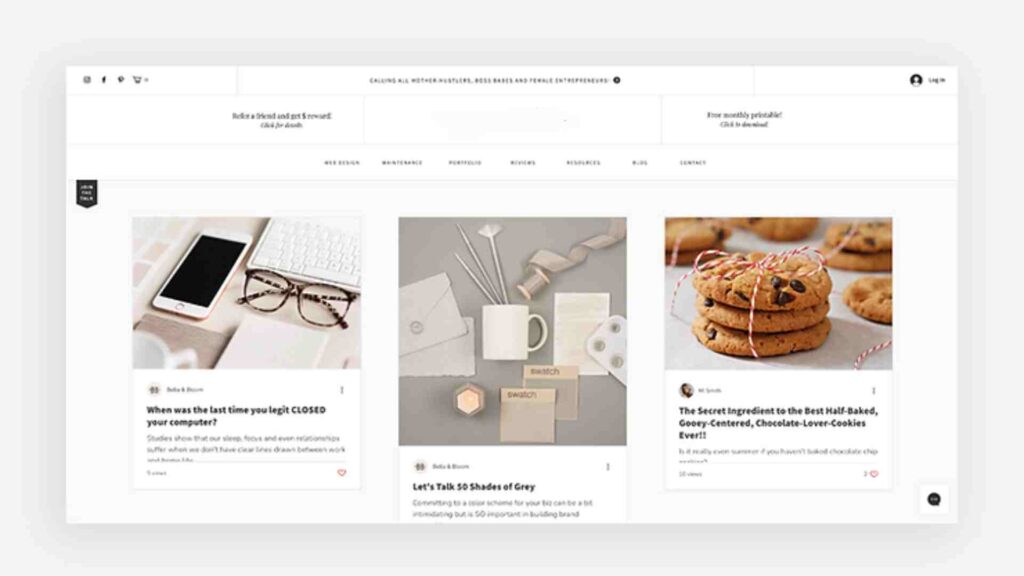Creating an art portfolio is a crucial step for any artist aiming to showcase their work in the best light. In 2024, the art world continues to evolve, and having a standout portfolio is more important than ever. Whether you’re a painter, digital artist, photographer, or sculptor, your portfolio should reflect your style, skill, and creativity. This blog will explore some of the best art portfolio examples from 2024 and offer tips on how you can create an impressive portfolio that makes a lasting impression.
Introduction
In 2024, having a well-crafted art portfolio is not just about showcasing your work—it’s about telling your story in a way that resonates with viewers. With more artists showcasing their work online, your portfolio needs to stand out. In this blog, we’ll look at some of the best art portfolio examples of 2024, offering inspiration and practical tips to help you create a compelling and visually stunning portfolio.
Why an Art Portfolio Is Essential
An art portfolio is much more than just a collection of your work—it’s a powerful tool for presenting your artistic identity and attracting opportunities. Here’s why having a standout portfolio is crucial:
1. Professional Presentation
Your portfolio serves as a visual resume, showcasing your best work in a professional manner. A well-organized and visually appealing portfolio can significantly impact how others perceive your art.
2. Networking and Opportunities
A strong portfolio opens doors to exhibitions, commissions, and collaborations. It acts as a calling card, helping you connect with galleries, potential clients, and art enthusiasts.
3. Personal Branding
Your portfolio is a reflection of your personal brand. It helps establish your unique artistic identity and differentiates you from other artists in your field.
4. Career Growth
A comprehensive portfolio can help you secure jobs, freelance gigs, or academic opportunities. It’s a key element in advancing your career as an artist.
Top Art Portfolio Examples in 2024
To give you some inspiration, let’s dive into some of the best art portfolio examples from 2024. These portfolios stand out for their creativity, design, and effectiveness in showcasing the artist’s work.
1. Digital Art Portfolios
Digital art portfolios are all about interactivity and showcasing your digital prowess. Here are some notable examples:
- Example 1: Alex Kim’s Portfolio
- Features: Alex’s portfolio uses interactive animations and multimedia elements to bring his digital art to life. The website includes interactive galleries and a section dedicated to his creative process.
- Why It Stands Out: The use of dynamic elements and engaging visuals makes the portfolio not only a display of art but also an experience for visitors.
- Example 2: Maya Patel’s Digital Gallery
- Features: Maya’s site features a sleek, minimalist design with a focus on high-resolution images and seamless navigation. Her portfolio is categorized by projects, making it easy for viewers to explore her work.
- Why It Stands Out: The clean design and intuitive user experience highlight Maya’s digital skills while allowing the artwork to be the main focus.
2. Fine Art Portfolios
Fine art portfolios often emphasize traditional techniques and craftsmanship. Here are some standout examples that shine in this field:
- Example 1: John Stevens’ Classical Art Portfolio
- Features: John’s portfolio is a testament to classical art techniques. The site features detailed images of his paintings, along with in-depth descriptions of each piece.
- Why It Stands Out: The attention to detail and informative content provide viewers with a deep understanding of John’s artistic process and historical influences.
- Example 2: Emma Clarke’s Contemporary Art Collection
- Features: Emma’s portfolio showcases her contemporary artworks with a focus on vibrant, high-resolution images. The site includes a blog where she discusses her inspiration and techniques.
- Why It Stands Out: The combination of striking visuals and insightful content creates an engaging experience for visitors and highlights Emma’s contemporary approach.
3. Photography Portfolios
Photography portfolios benefit from clean layouts that let the images shine. Here are some examples:
- Example 1: Luis Hernandez’s Photo Gallery
- Features: Luis’s portfolio features full-screen images with a minimalistic design. The site includes categorized galleries by theme and project.
- Why It Stands Out: The emphasis on large, high-quality images ensures that Luis’s photography is presented in the best possible light.
- Example 2: Sarah Lee’s Portrait Photography
- Features: Sarah’s portfolio showcases her portrait work with an elegant design. The site includes client testimonials and a section for behind-the-scenes stories.
- Why It Stands Out: The combination of stunning portraits and personal stories adds depth to Sarah’s portfolio, creating a more personal connection with viewers.
4. Sculpture Portfolios
Sculptors face unique challenges in showcasing 3D work online. Here are a couple of portfolios that excel in this area:
- Example 1: Michael Johnson’s 3D Sculpture Showcase
- Features: Michael’s site includes 360-degree views of his sculptures and detailed close-up images. The portfolio is organized by materials and themes.
- Why It Stands Out: The interactive 3D views and detailed imagery help convey the texture and scale of Michael’s sculptures.
- Example 2: Olivia Thompson’s Installation Art
- Features: Olivia’s portfolio features videos and images of her large-scale installations. The site includes information on each installation’s concept and execution.
- Why It Stands Out: The multimedia approach effectively communicates the impact and context of Olivia’s work, providing a richer experience for visitors.
5. Mixed Media Portfolios
Mixed media artists often combine various techniques, which can be challenging to showcase. Here are some standout examples:
- Example 1: Ethan Brooks’ Mixed Media Artworks
- Features: Ethan’s portfolio displays his mixed media creations through high-resolution images and interactive elements. The site also features time-lapse videos of his creative process.
- Why It Stands Out: The interactive features and process videos offer an in-depth look at Ethan’s innovative approach to mixed media art.
- Example 2: Ava Miller’s Collaborative Projects
- Features: Ava’s portfolio focuses on collaborative mixed media projects. The site includes galleries, project descriptions, and artist collaborations.
- Why It Stands Out: The collaborative aspect and detailed project descriptions provide a comprehensive view of Ava’s work and her collaborative approach.
Key Features of Outstanding Art Portfolios
To create an exceptional art portfolio, whether digital or physical, consider incorporating these key features:
1. High-Quality Visuals
Use high-resolution images or videos that accurately represent your work. Ensure that your art is displayed in the best possible quality to make a strong impression.
2. Organized Layout
Organize your portfolio into clear categories or projects. This helps visitors navigate your work easily and find what they’re looking for.
3. Engaging Descriptions
Include brief, insightful descriptions for each piece. Explain the concept, technique, or inspiration behind the work to provide context.
4. Interactive Elements
For digital portfolios, consider adding interactive features like sliders, zoom functions, or 360-degree views. These elements can enhance the viewer’s experience.
5. Personal Branding
Ensure that your portfolio embodies your personal brand. and artistic style. Consistent design elements and a cohesive narrative help reinforce your identity.
6. Contact Information
Make it easy for viewers to get in touch with you. Include contact details or a contact form to facilitate inquiries and potential collaborations.
Why a Personal Website Enhances Your Art Portfolio
A personal website offers numerous advantages for showcasing your art portfolio:
1. Customization
You have full control over the design and functionality of your website, allowing you to create a portfolio that perfectly matches your artistic vision.
2. Professionalism
A well-designed personal website adds credibility and professionalism to your portfolio, setting you apart from artists using generic platforms.
3. SEO Benefits
4. Direct Communication
Your website can include contact forms and direct links to your social media profiles, making it easier for clients and galleries to reach you.
5. Showcase Versatility
A personal website allows you to showcase a diverse range of work, including interactive elements, videos, and detailed project descriptions.
FAQs
Q1: What should I include in my art portfolio?
Your portfolio should feature high-quality images of your best work, organized into clear categories. Include descriptions for each piece and ensure that your contact information is easy to find.







